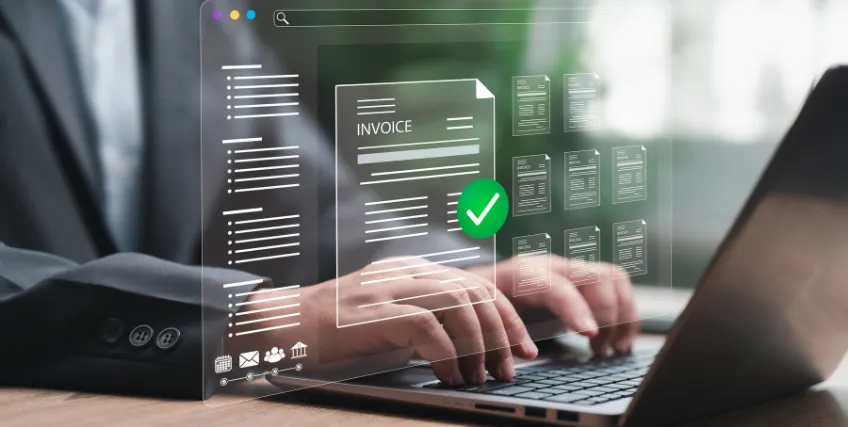How to Get a Line of Credit: A Step-by-Step Guide for Beginners
July 02, 2025 | Last Updated on: June 04, 2025

A small business line of credit is helpful for your business when you need short-term expenses, to replenish the working capital in your account, and when you require the same for operational costs. Just like credit cards, businesses can also use their line of credit when required and pay the interest only on the amount they have used or taken out.
But before you apply to get a line of credit, you need to understand how it works and what you should look for. You should go through the repayment terms of every lender, their interest rate, and eligibility requirements, along with other documents.
In this article, you will get to know all about that, and a step-by-step guide to apply for these types of bank accounts.
Understanding the business line of credit
A line of credit is similar to a credit card. Once a company gets a line of credit, it can use it whenever required and can pay the interest on the amount they have used for the work. As they repay the loan taken, the line of credit will replenish the credit that was available, which allows you to take out new loans when required. A line of credit generally has a lower interest rate than a business credit card. But you won’t have access to reward programs, which you get with many cards, like credit cards.
Once you get a line of credit, you will see that it is designed for managing the cash flow and is a good option for small expenses, which are done frequently. You can continue to withdraw money and repay what you borrowed throughout the draw period.
There are two types of business line of credit, namely, unsecured and secured line of credit. Both of them have their own benefits and drawbacks, but the best choice depends on the assets you have for your business to access.
How to apply for a line of credit in 5 steps
Below are the steps you need to apply for a line of credit.
Decide between a secured and unsecured line of credit
Both secured and unsecured options can be helpful when you need to get a line of credit for your business. A secured line of credit is ideal if you have valuable assets or a less-than-perfect credit history. Offering collateral can help you qualify more easily and may reduce the interest rate, making it more affordable to borrow money when needed.
Since collateral lowers the lender’s risk, secured lines often come with more favorable terms, especially if dealing with bad credit. In contrast, an unsecured line of credit typically has a higher rate and stricter approval criteria. Lenders may expect a stronger credit score, often in the mid-600s or higher, along with solid annual revenue. Still, it can be a flexible solution to cover unexpected expenses when you don’t want to rely on a traditional loan.
Research business line of credit requirements
All lenders have their own set of requirements for opening a business line of credit pre-approval, where some are more lenient than others. You may like to go through the information that lenders provide on their website or through their representatives before you start applying for this loan option.
Below are some of the common areas that lenders look at when they set requirements, including:
- Years in business: Lenders generally want to know how long the business has been operating.
- Revenue and cash flow: Lenders would want to know whether you have a healthy cash flow and if you can handle debt consolidations.
- Business and personal credit score: A company can get a line of credit with a business credit score that will show how the industry is handling its finances, just like an unsecured personal line of credit or credit score. Lenders can also set a minimum credit score that you will have to show to get a line of credit.
- Industry: Lenders can also exclude some industries that want to get a line of credit, like cannabis businesses. They can also make strict rules for some sectors, like restaurants, which will lead to disqualification.
- Business plan: Some lenders would also want to see your monthly payments to forecast your business planning, which will help them understand your revenue, goals, and marketing. This will also make them understand your repayment process to the financial institution.
Gather the required information
Your small business lender will want to review some general information about your business, its owners, and its finances. They will also want to know the amount you want to borrow for a line of credit.
Some of the required documents are:
- Business plan
- Articles of incorporation
- Profit and loss statements
- Business licenses
- Personal and business tax returns
- Information about other debt obligations
- Personal and business bank statements
If you want to get a line of credit that is secured, you must prove your ability to submit collateral. Some lenders would also want you to sign a personal guarantee, which will secure their loan.
Select a lender
Multiple lenders can help you get a line of credit, including credit unions, online lenders, and traditional banks. But before you select a lender to get a line of credit, you must compare them with other lenders for a better deal.
- Maximum credit limits: The maximum amount you can borrow from a lender will depend on your credit score, the type of business, and the type of lender you have. The lender will fix your maximum amount for your application.
- Draw periods: Make sure that you understand the terms to get a line of credit of your choice, like how long you will have the available credit to withdraw funds.
- Repayment terms: Once you withdraw the funds you want, you should keep track of the repayment window, as repayment terms are generally short, like six to 24 months.
- Requirements: It is important for you to check the requirements before you start to get a line of credit, to make sure that your business meets them. Lenders generally look for decent personal credit and enough cash flow to repay the loan.
- Associated fees: Compare the fees of the lenders to align with competitive rates, to make sure you get the best deal.
- Reporting to credit bureaus: Most business line of credit will be reporting to the credit bureaus, that will help you in building business credit. But you should also see the fine print, as some lenders may not report your payments.
Apply for a business line of credit
Once you've found a lender that fits your needs, completing the application is the next step to get a line of credit. Depending on the lender, you may be able to apply online, by phone, or in person.
Before submitting your application, double-check that all required documents are included and that your information, especially financials and business details, is accurate and current. This will help avoid delays and improve your chances of approval.
Final thoughts
If you want a line of credit for your business, it's essential to understand the terms, compare lenders, and prepare the correct documentation. A business line of credit offers flexibility similar to a cash advance but with potentially lower costs when managed wisely.
Staying in good standing with lenders, making timely repayments, and maintaining healthy finances can improve your creditworthiness. Be mindful of any transaction fees or hidden charges affecting the total cost. With the right approach, a line of credit can be a powerful tool for supporting your business growth and stability.
FAQs about get a line of credit
What is a good starting line of credit?
If you're starting, a reasonable credit limit for your first card might be around $1,000. As you establish a solid credit history, maintain a steady income, and build a good credit score, your limit can grow to $5,000, $10,000, or even more, giving you the flexibility to cover larger purchases. Just keep in mind that credit card companies often won't offer high limits upfront; you'll need to demonstrate responsible use over time to qualify for those increases.
How to start a line of credit with no credit?
A secured credit has the same amount you deposited with the company as a line of credit. Once you show the same amount, you can make an on-time payment; you might also be able to get your security deposit back with the outstanding balance, upgrade to an unsecured credit card, and increase your credit limit.
What are the requirements to get a personal line of credit (PLOC)?
A personal line of credit typically requires a good credit score, a solid credit history, and a regular income to qualify for a personal line of credit. So those who don’t have perfect credit may face challenges while qualifying for PLOC.
What documents are required for a line of credit?
To apply for a personal line of credit, you’ll generally need to provide identification, proof of household income, information about any existing debts, and collateral documents if you’re applying for a secured line. Sometimes, lenders may allow you to use a savings account as collateral, especially when seeking better terms or a higher credit limit.
Is it difficult to get approved for a line of credit?
It can be tough to get a line of credit when you have a bad credit or a below-average credit score. It happens because most lenders will see you as a risk when they have to lend you the money, as they risk non-repayment.




